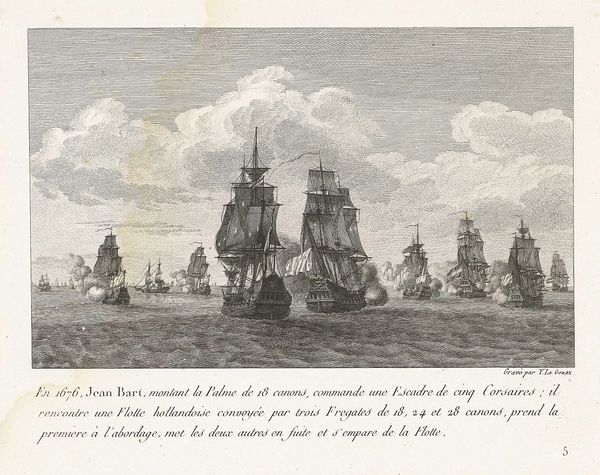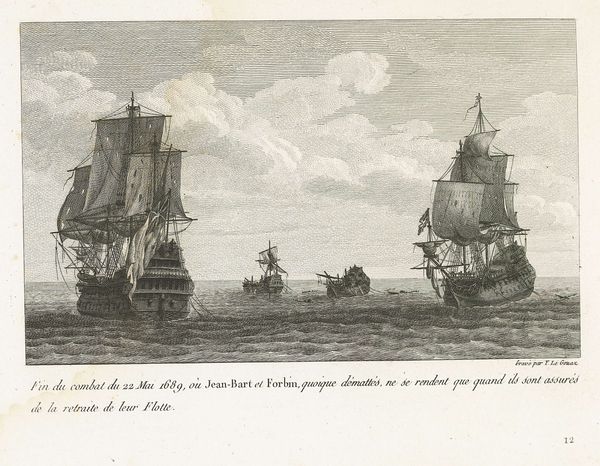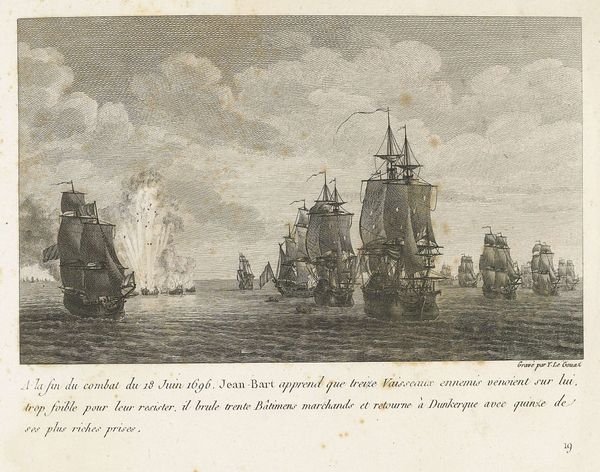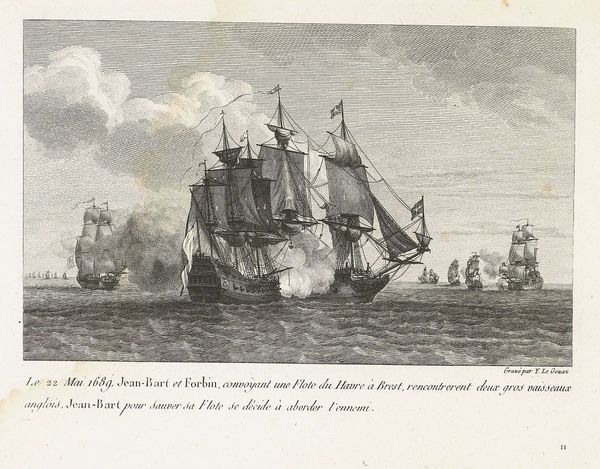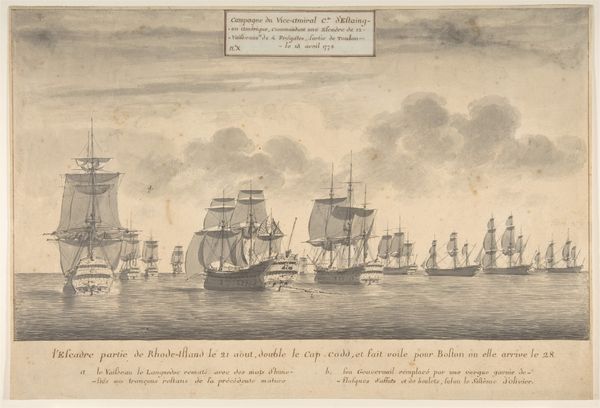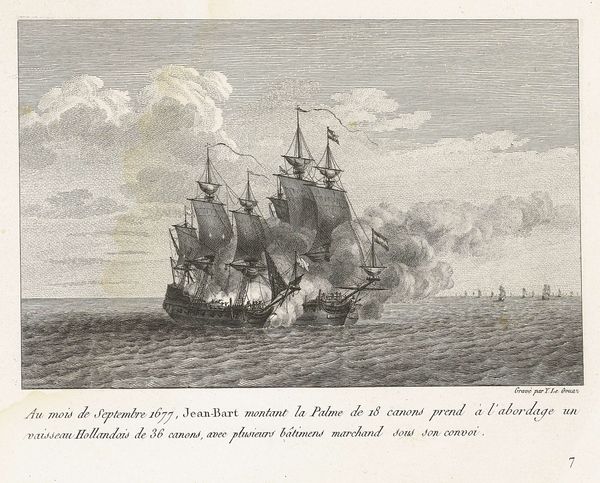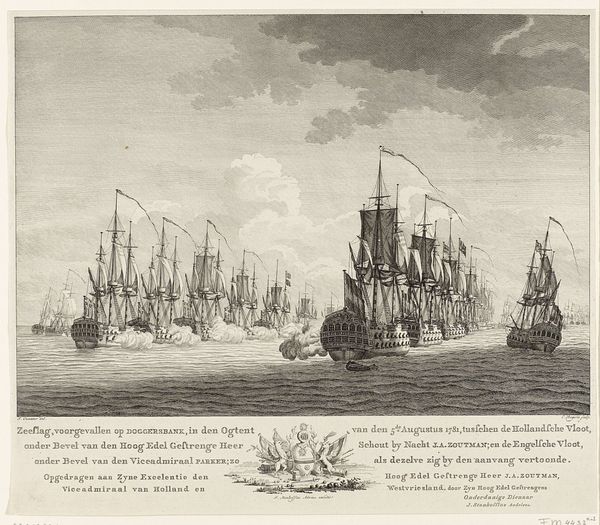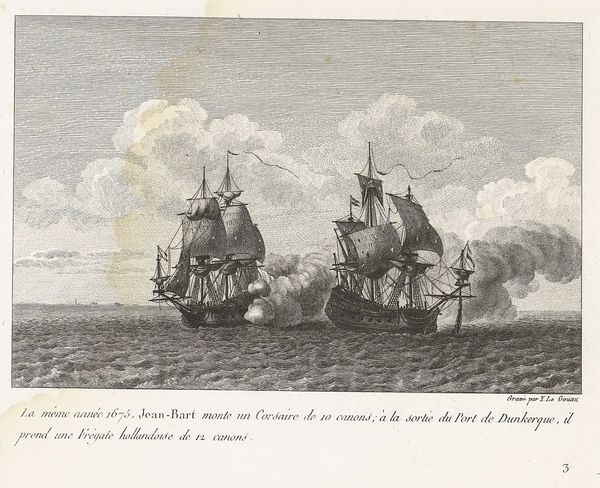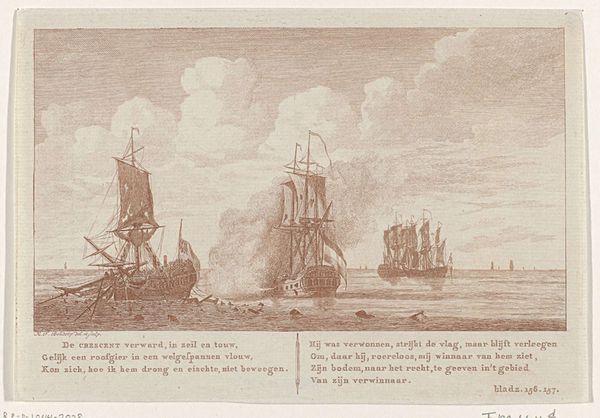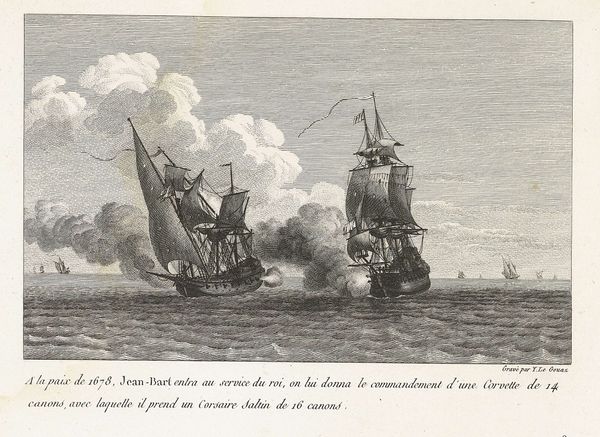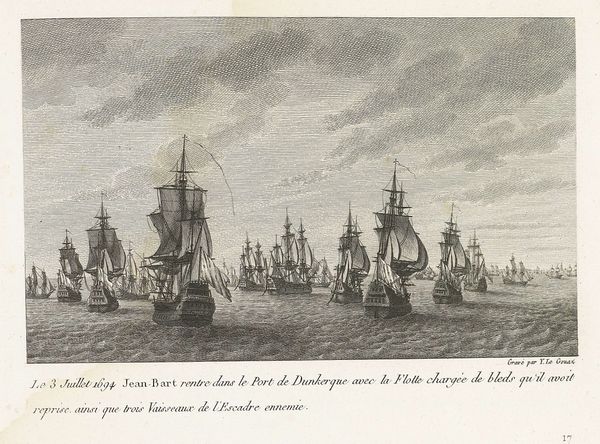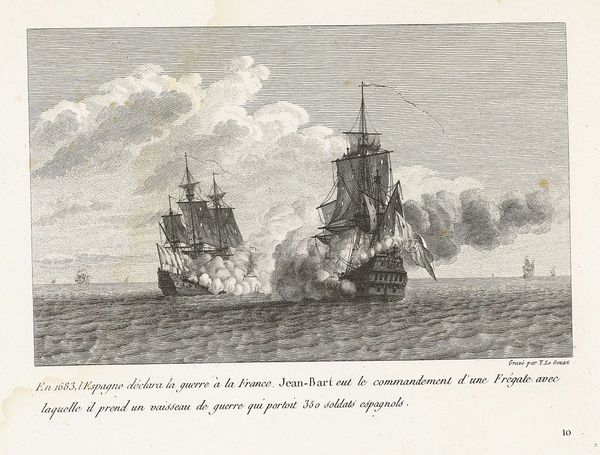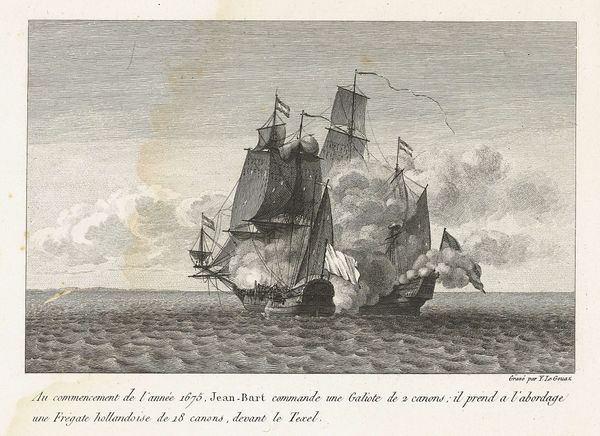
Jan Bart valt Hollandse schepen in de Baltische zee aan, 1675 1806
0:00
0:00
yvesmarielegouaz
Rijksmuseum
Dimensions: height 180 mm, width 220 mm
Copyright: Rijks Museum: Open Domain
Curator: Look at this engraving from 1806 by Yves Marie Le Gouaz, titled "Jan Bart valt Hollandse schepen in de Baltische zee aan, 1675." Editor: It has this strangely detached feel. Everything's very neat and orderly, but it depicts such violent activity. All these ships in such perfect detail but without a drop of human blood to see, really striking! Curator: Indeed. As a historian, I note this piece provides a window into 19th-century views of 17th-century naval battles. The Rijksmuseum holds this print as an historical document, reflecting both Dutch and French perspectives. Editor: For me, the stark black and white creates an interesting tension, forcing you to confront the power dynamics inherent in warfare and who is telling the story and whose stories go ignored. It almost reads as an allegory of power and erasure. It reminds me how power dynamics of gender and race impact historical memory and storytelling. What context existed between Dutch and French societies? What motivated this view? Curator: Excellent questions. During that era, France and the Dutch Republic were frequently at odds, competing for maritime and colonial dominance. Jean Bart was a celebrated French naval hero known for disrupting Dutch trade routes. Prints like this would have bolstered national pride and legitimized France’s naval endeavors. Editor: How interesting that in a museum context, historical value now translates differently and may well be used to spark an interrogation of national histories and their erasures. What did heroism even mean then? The glorification of warfare as inherently masculine activity that benefits and relies on states… I feel there are very current concerns this engraving evokes. It has so much relevance. Curator: I agree. By looking at its history, production, reception, we can glean insight on how historical narratives are crafted and promoted through art. This image acted as propaganda then and can now foster conversations about power. Editor: Absolutely. It invites us to think critically about how art can perpetuate and challenge dominant narratives, reminding us that there are often multiple stories waiting to be uncovered.
Comments
No comments
Be the first to comment and join the conversation on the ultimate creative platform.
